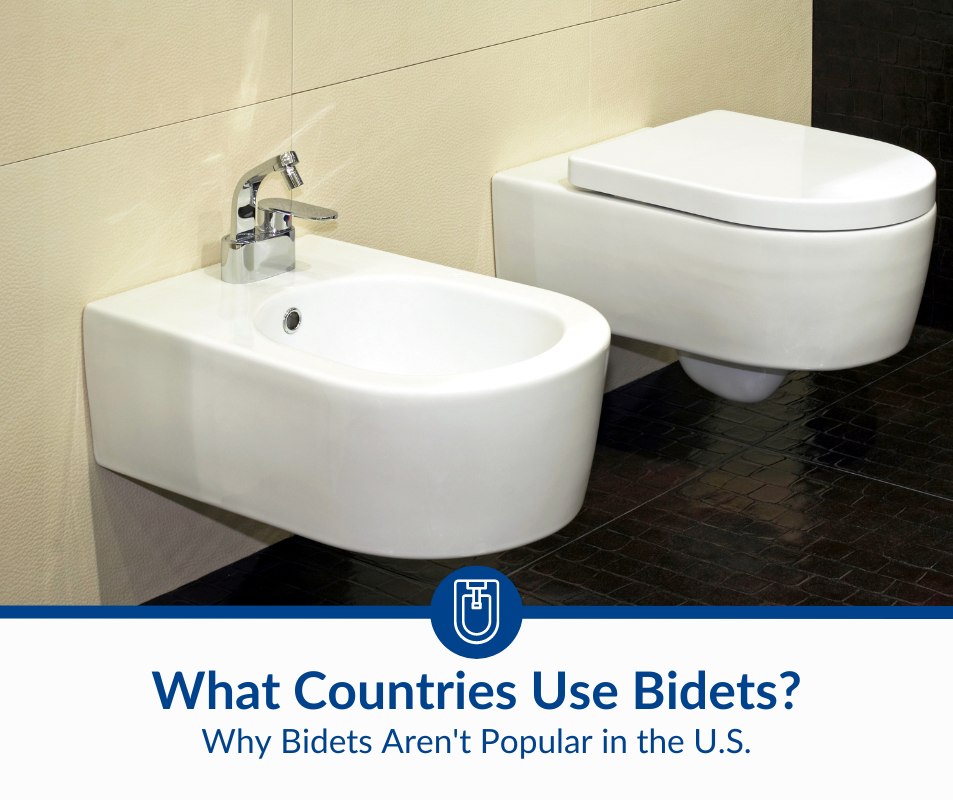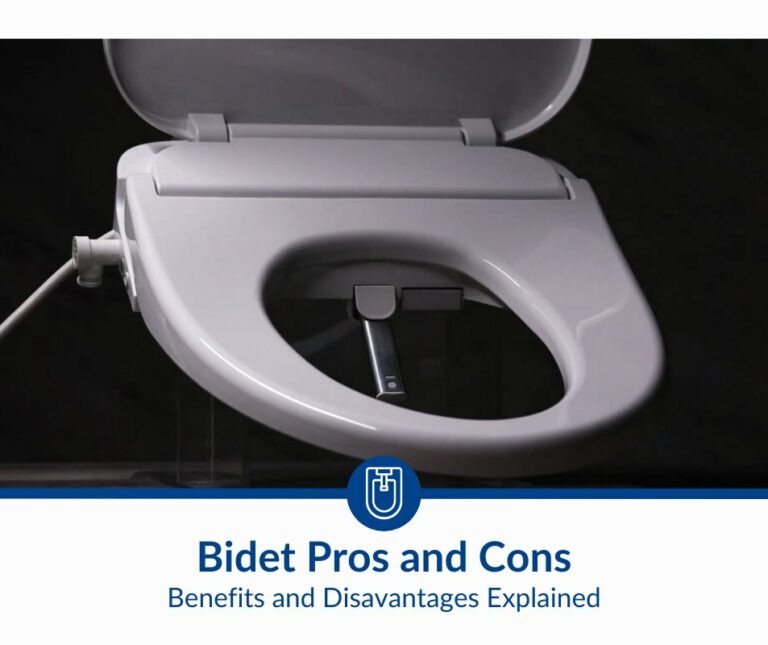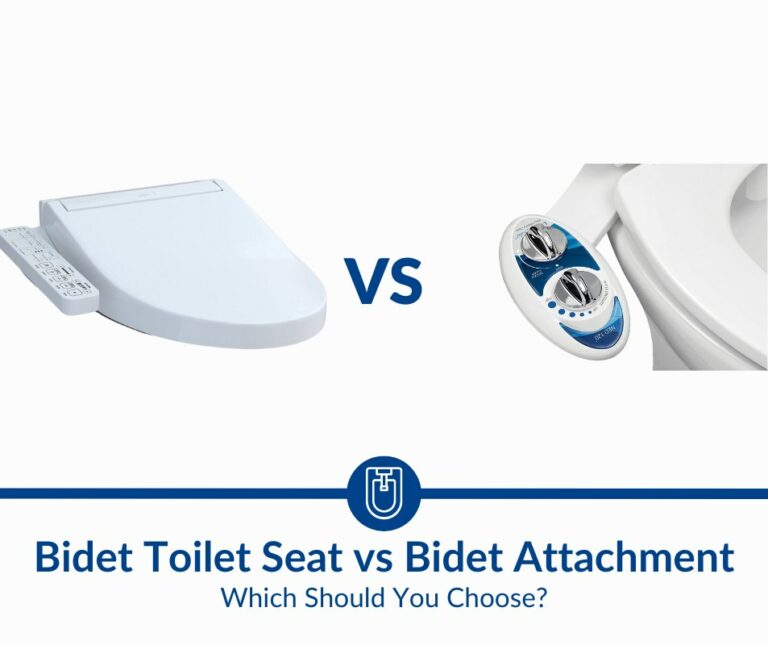What Countries Use Bidets?
Bidets are essential in some places, while they’re practically nonexistent in others. There’s no denying the cleanliness of using a sanitary bidet, but it’s not always a popular choice for people in many countries. Knowing which countries use bidets will help you understand why they’re used and whether or not you should use them.
Countries that use bidets include Japan, France, Italy, Portugal, and many others. However, some countries do not use bidets nearly as often, including the US, most of the United Kingdom, and Canada. Historical and cultural trends are the biggest factors in countrywide bidet usage.
Throughout this post, I’ll explain what bidets are used for, which types of bidets there are, and which countries prefer bidets over toilet paper. I’ll also provide you with numerous historical and cultural tidbits to show you why they’re used more in some places than others.
Overview of Bidets
Bidets are water nozzles and hoses designed to help you clean up after using the restroom. They can be installed into a plumbing system, used with a built-in portable tank, and more. Some people prefer using bidets because they don’t have to use as much toilet paper. That said, most bidet users have to use a piece of toilet paper to dry afterward.
However, some modern bidets have air dryers that remove the need for toilet paper altogether. You can turn on the bidet, click the self-cleaning button, and use the dryer to get rid of the excess water.
If you’ve never used bidets or you’re wondering what they’re used for, read on.
What Are Bidets Used For?
Bidets are used to clean the anus and genitals after going to the bathroom. The Atlantic explains that bidets were first used in France in the 1600s. These washing tubs quickly turned into pots, then pressurized water systems. The fact that bidets started in France is significant because it’s the main reason England avoided bidets for so long. (If you’re aware of the sort of relationship these two countries have had historically, you can guess why.)
Bidets come with a wide variety of settings and adjustments, depending on the make and model. For instance, some bidets have heated water, while others use water pressure instead of electrical hookups.
Most people use bidets for about 20 to 60 seconds, depending on the water pressure, level of cleanliness, and personal preference. Using a bidet for too long can have adverse effects, including discomfort, hemorrhoids, and fissures. That said, these examples are quite rare and aren’t likely to occur if the bidet was used properly.
The most common bidets use electricity or water pressure. However, many have front-end nozzles for the genitals, seat heaters, directional controls, thermostats, and more.
Where Are Bidets Common?
Bidets are common in Asia, France, and the Middle East. They are also popular in some parts of Europe (e.g., France), but not all of them. The reasons for choosing bidets over toilet paper vary from country to country. All of these locations have relied on bidets for many centuries, though.
Here’s an in-depth look at the countries that use bidets:
- Asian countries: Many Asian countries use bidets due to the lack of available toilet paper, especially Southeast Asian countries. Toilet paper requires heavy manufacturing processes, including chopping trees and using fossil fuels. Since many Southeast Asian countries are considered third-world countries, they usually don’t have access to these resources.
- France: France is the country that invented bidets over four centuries ago, so it’s no surprise that they’re still common in the country. They’ve evolved from tubs to bottles to seats, attachments, and more. France is one of the top countries in terms of widespread bidet usage. In fact, the word “bidet” was apparently derived from the French word for “pony,” owing to how these implements are used.
- Spain: Spain shares a border with France, and they’ve had many trade agreements for several centuries. So, it was only a matter of time before bidets made their way into Spain. In fact, toilet paper is relatively uncommon in Spain because bidets are found in the vast majority of homes, public businesses, and so on.
- Italy and Portugal: Italy and Portugal use bidets for the same reason. Vitra claims that a 1975 law made it imperative that all Italian and Portuguese households install bidets. Each house was required to have at least one bidet. This instantly made the country a popular place for bidets but not so much for toilet paper.
- Middle Eastern countries: Most Middle Eastern countries use bidets for religious reasons. Islam is widespread in the Middle East, meaning bidets are popular there as well (for reasons that I’ll explain in more detail later).
Keep in mind that though many countries use bidets, they’re just not nearly as popular. Bidet usage is spreading to many Western countries. As availability and types of bidets expand, more people are switching to them. However, that doesn’t mean every country will soon accept bidets as their primary bathroom cleaning method.
Which Countries Don’t Use Bidets?
Countries that don’t use bidets as often include the UK’s countries, the United States, Canada, and parts of Africa. Bidet usage is split among South American countries based on availability, water shortages, and many other factors. Most usage is based on how the devices spread with colonialism.
Let’s review why these countries avoid bidets or don’t use them as often:
- United Kingdom countries: The United Kingdom includes England, Wales, Northern Ireland, and Scotland. These countries don’t use bidets due to the conflict between England and France. France made bidets, so England doesn’t use bidets. (As ridiculous as it sounds, yes, it’s as simple as that).
- The United States: The United States doesn’t use bidets mostly because its residents have relied on toilet paper for so long. Going to the bathroom is a very personal and private thing, so it’s difficult to convince hundreds of millions of people to change the way they do things in the restroom.
- Canada: Canada doesn’t use bidets for the same reasons as the United States. Switching a bathroom routine is challenging for one person, much more so for millions of people. Furthermore, toilet paper is more readily available in brick-and-mortar stores, which is where many Canadians shop in the far northern parts of the country.
- African countries: Most African countries can’t use bidets because the appliances are too expensive, and there are massive water shortages. Africa is known to have some of the worst droughts in the world, so it’s no surprise that they have to preserve as much water for drinking and cooking as possible.
Although these countries don’t use bidets as often as the aforementioned countries, it’s safe to say that the US and Canada are getting more familiar with them. As toilet paper costs increase and the desire to reduce fossil fuel consumption increases, more people are considering bidets in Western countries.
Are Bidets Banned or Illegal in Any Countries?
Contrary to popular belief, no country has made it illegal to use bidets. The confusion is due to the fact that many parts of Africa ban or limit water usage in certain areas, which means bidets technically can’t be used. However, these laws don’t specifically prevent people from installing bidets in their homes.
Additionally, many people believe Australia banned bidets. This couldn’t be further from the truth. Australia never made it illegal to install or use bidets, they’re just not too common in the country. However, bidet use is slowly growing in Australia for the same reasons as in the United States.
Reasons for Differences in Bidet Uses
Bidets are used for all sorts of reasons. They’re also avoided due to a lack of understanding or availability. As mentioned above, most countries that use bidets do so because they have for many decades or centuries. Historical and cultural reasons have great significance, even when it comes to something as simple as going to the bathroom.
So, why do some countries prefer bidets more than others?
Cultural Differences
Many cultures use bidets for religious purposes. According to Arab America, Muslims are required to use bidets and other forms of water to maintain their cleanliness after using the bathroom.
Although the desire for cleanliness isn’t exclusive to those who follow Islam, the Quran explicitly states that Allah “loves those who keep themselves pure and clean.” For this reason, they’re very popular in the Middle East and other locations with large Muslim populations.
Since most other religious and non-religious people don’t have the same requirements as Muslims, they’re not affected by these cultural decisions. However, someone who’s not religious could still be accustomed to bidet usage due to their location. For instance, a non-religious person living in Turkey will likely use bidets because Turkey has a high Muslim population.
Historical Reasons
One of the most interesting historical facts about bidets is that France has led England away from them. England and many other parts of the United Kingdom don’t use bidets because they were invented by the French. Since England and France had a long-term rocky relationship (including wars), they tended to avoid French inventions.
Additionally, the same rules apply to the United States’ lack of bidets. While there are many reasons most of North America doesn’t use bidets, the main one is that the US was formed by English colonies. As the English ignored bidets, so did the colonists who formed the United Colonies, which became the United States.
Bidet Health Benefits
Bidets have many health benefits, most of which come from optimal cleanliness. However, there are many other advantages of installing a bidet or a bidet attachment in your bathroom.
Countries that favor bidets often do so because they’re much more convenient and healthier. Consider this list of health benefits associated with using bidets:
- Using pressurized water is much more efficient when it comes to removing debris from multiple parts of your body. This benefit prevents bacteria from building up and causing infections. It can also help clean and heal existing infections that would otherwise be very difficult to handle.
- Bidets remove foul odors better than toilet paper. Not only can bidets remove urine, feces, and other debris, but they can also eliminate sweat buildup. Whether you worked a long day or you just got back from the gym, nobody wants to smell bad. Many countries use bidets to smell better, and there are no signs of stopping.
- Bidet water is controllable, which means you can reduce the pressure and prevent fissures. It’s gentler on your privates than toilet paper. This is especially important for people who have higher sensitivity than most. A bidet’s water pressure is controlled by plumbing pressure or electrical hookups.
- Many people use bidets to help treat hemorrhoids. Healthline explains the softness of water combined with the higher level of cleanliness makes bidets ideal for people with hemorrhoids, trouble going to the bathroom, and more. However, it’s important to adjust the pressure; otherwise, bidets can actually worsen the problem.
Are Bidets Becoming More Popular in Some Countries?
Bidets are becoming more popular in some countries due to financial reasons, education on cleanliness, and cultural spreading. Thanks largely to globalization, these healthy bathroom practices are becoming more familiar and comfortable to talk about and use.
Here’s a list of what you should know about the bidet’s rising global popularity:
- Global toilet paper shortages in 2020 exposed a much wider population to bidets. This historical event led to numerous production issues, so more people in different countries began using bidets. It’s undoubtedly one of the biggest and most influential events for the spreading of these bathroom gadgets.
- Fluctuating religious beliefs and locations affect bidet usage. As religions spread to other parts of the world, they carry their belief systems and cultural practices with them. For instance, since Muslims are required to clean themselves with water after going to the bathroom, anyone who converts to Islam will do the same.
- Bidets are more affordable than toilet paper in the long run. This is perhaps one of the main reasons people choose bidets in the Western world. For example, many people in Canada and the United States only use bidets, so they don’t have to spend money on toilet paper. Bidets also prevent clearcutting and mass tree removal.
- Most bidets are easier to use and less likely to contaminate your hands than toilet paper. All you have to do is click a button or turn on a nozzle and wait for the bidet to clean you. There’s no need to worry about toilet paper tearing while you wipe. Furthermore, you can provide a deeper clean.
With these changes and more to come, there’s no doubt that more countries will start using bidets. They’ve also grown quite a bit due to portable bidets for people traveling, camping, hiking, and more. In due time, most countries will likely use one or more types of bidets in public and private locations.
What Types of Bidets Are There?
There are many types of bidets to choose from. Standard bidets found in restaurants, offices, and other public places are almost always standalone units. However, it’s important to know all of the available types, as well as which countries they’re most commonly used in.
Here are the four most common types of bidets:
Standalone Bidets
Standalone bidets are very popular in the Middle East, Asia, and many parts of Europe. They’re the most common type of bidet, and they’re also the closest to the original washing basin bidet from France. These bidets last much longer than other types because they’re built and installed like regular toilets.
Bidet Seats
Bidet seats are installed in place of the toilet seat. There’s no need to add extra square footage to the bathroom because these seats hook into the toilet’s plumbing. They’re excellent space-savers, but they’re also the only other type of bidet that offers warm seats next to the standalone bidet. They’re more common in developed countries, such as Japan.
Bidet Attachments
Bidet attachments mount under the toilet seat. Much like bidet seats, they use the toilet’s plumbing for water pressure. You can hook these attachments into an electrical outlet for more power and temperature controls (again, much like bidet seats). These attachments are more common in countries with low bidet usage, such as the US and Australia.
Portable Bidets
Portable bidets are usually just small water bottles with nozzles. Squeezing the bottle releases the water through the nozzle, creating a pressurized stream of water. These bidets are popular for people from France, the Middle East, and other countries that use bidets.
Conclusion
While bidets aren’t used in every country, they’re getting more popular in North America. There are several reasons for this, including globalization and the spread of religions that emphasize cleanliness (e.g., Islam).
Bidets still have leaps and bounds ahead of them, but the health benefits and long-term savings are often well worth the bathroom change. Countries that have used bidets since they were invented will likely continue to do so for many generations to come.







